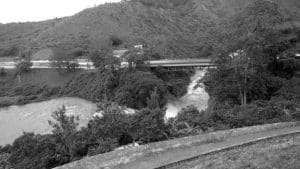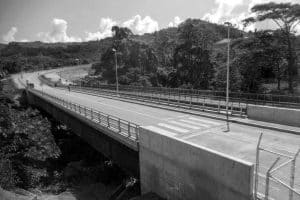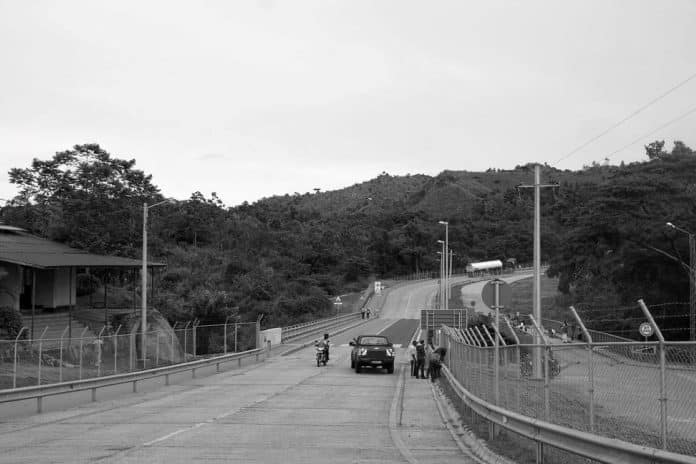Introduction to the Rusumo International Bridge
The Rusumo International Bridge is a remarkable feat of engineering that serves as a vital link between Tanzania and Rwanda. Stretching across the Kagera River, this bridge has transformed the regional landscape, facilitating the movement of people, goods, and ideas across borders. As you embark on this journey, you’ll discover how this remarkable structure has become a symbol of cross-border cooperation and economic growth in the heart of East Africa.
History and Significance of the Bridge

The Rusumo International Bridge has a rich history that dates back to the early 2000s. Recognizing the need for improved regional connectivity, the governments of Tanzania and Rwanda collaborated to conceive and construct this ambitious project. The bridge was designed to replace the aging and inadequate ferry system that had previously served as the primary means of crossing the Kagera River.
The significance of the Rusumo International Bridge cannot be overstated. It has become a crucial link in the East African transportation network, connecting the two nations and facilitating the movement of people, goods, and services. This cross-border connection has helped to strengthen economic ties, foster cultural exchange, and promote the integration of the region.
Features and Structure of the Bridge
The Rusumo International Bridge is an engineering marvel, boasting impressive features and a robust structure. Spanning a length of 1,007 meters, the bridge is constructed using reinforced concrete and steel, ensuring its durability and resilience. The bridge features two lanes for vehicular traffic, as well as dedicated pedestrian walkways on both sides, allowing for the safe passage of both motorists and pedestrians.
One of the most striking features of the Rusumo International Bridge is its distinctive design. The bridge’s elegant arched structure not only serves a functional purpose but also adds a touch of architectural beauty to the landscape. The bridge’s lighting system, which illuminates the structure at night, further enhances its visual appeal and creates a sense of grandeur.
Benefits of the Rusumo International Bridge
The Rusumo International Bridge has brought about a multitude of benefits for both Tanzania and Rwanda. Perhaps the most tangible benefit is the improved connectivity it has facilitated between the two nations. Prior to the bridge’s construction, the ferry system was often unreliable and prone to delays, hampering the flow of trade and the movement of people. The Rusumo International Bridge has eliminated these challenges, allowing for a seamless and efficient cross-border experience.
In addition to enhancing connectivity, the bridge has also contributed to the economic development of the region. By facilitating the movement of goods and services, the bridge has opened up new opportunities for trade and investment. Businesses on both sides of the border have been able to expand their reach and tap into new markets, leading to increased economic activity and job creation.
Economic Impact of the Bridge on Tanzania and Rwanda

The economic impact of the Rusumo International Bridge on Tanzania and Rwanda has been significant. The bridge has helped to streamline the flow of goods and services, reducing transportation costs and improving the efficiency of cross-border trade. This, in turn, has led to an increase in the volume of trade between the two countries, with a corresponding boost in economic growth and prosperity.
The bridge has also attracted new investment, as businesses have recognized the opportunities presented by the improved connectivity. This has led to the establishment of new industries and the expansion of existing ones, creating job opportunities and generating additional revenue for the local economies.
Furthermore, the bridge has facilitated the movement of people, encouraging the exchange of ideas, skills, and cultural experiences. This has contributed to the overall social and economic integration of the region, fostering a sense of shared prosperity and mutual understanding.
Social Impact of the Bridge on Local Communities
The Rusumo International Bridge has had a profound social impact on the local communities on both sides of the border. By improving connectivity and accessibility, the bridge has helped to bridge the gap between these communities, facilitating the exchange of ideas, cultural experiences, and social interactions.
The bridge has also played a crucial role in improving access to essential services, such as healthcare and education. Residents from both Tanzania and Rwanda can now more easily access these services, regardless of their location, leading to a more equitable distribution of resources and opportunities.
Furthermore, the bridge has helped to strengthen the social fabric of the region by promoting the movement of people and the exchange of cultural traditions. This has fostered a greater sense of unity and shared identity among the local communities, contributing to the overall social cohesion of the region.
Environmental Considerations of the Bridge
The construction and operation of the Rusumo International Bridge have also been subject to careful environmental considerations. The project’s planners and engineers have worked diligently to minimize the bridge’s impact on the surrounding ecosystem, ensuring that it is built and maintained in an environmentally sustainable manner.
One of the key environmental considerations has been the preservation of the Kagera River ecosystem. The bridge’s design and construction have been carefully crafted to avoid disrupting the natural flow of the river and to protect the delicate habitats of the aquatic species that call it home. Additionally, the project has incorporated measures to mitigate the potential for soil erosion and water pollution, ensuring that the bridge’s impact on the environment is kept to a minimum.
Furthermore, the bridge’s lighting system has been designed with energy efficiency in mind, utilizing LED technology to reduce the overall energy consumption and carbon footprint of the structure. This commitment to environmental stewardship has been a hallmark of the Rusumo International Bridge project, ensuring that it serves as a model of sustainable infrastructure development in the region.
Challenges and Obstacles During the Construction Process
The construction of the Rusumo International Bridge was not without its challenges and obstacles. The project’s planners and engineers faced a range of logistical, technical, and political hurdles that required careful navigation and innovative problem-solving.
One of the primary challenges was the remote and rugged terrain of the project site, which presented significant logistical and engineering challenges. The construction team had to overcome steep slopes, dense vegetation, and limited infrastructure to transport materials and equipment to the construction site. This required the development of specialized transportation solutions and the coordination of complex logistics.
Additionally, the cross-border nature of the project added an additional layer of complexity, as the construction team had to navigate the bureaucratic and political landscapes of both Tanzania and Rwanda. Coordinating the approval processes, securing the necessary permits, and aligning the interests of stakeholders on both sides of the border required a high degree of diplomacy and collaboration.
Despite these challenges, the construction team persevered, drawing on their expertise and the support of the two governments to overcome obstacles and deliver the Rusumo International Bridge on time and within budget. This achievement is a testament to the dedication and ingenuity of the project’s stakeholders and the power of cross-border cooperation.
Future Developments and Plans for the Bridge
The Rusumo International Bridge is not merely a static structure; it is a dynamic and evolving part of the regional transportation network. The governments of Tanzania and Rwanda, along with their international partners, have ambitious plans to further enhance the bridge’s capabilities and expand its impact on the region.
One of the key future developments is the integration of the bridge into a larger network of regional infrastructure projects. This includes the expansion of the road network on both sides of the border, as well as the potential for the construction of additional cross-border bridges and transportation hubs. By creating a more comprehensive and interconnected transportation system, the Rusumo International Bridge will become an even more critical node in the East African economic and social landscape.
Additionally, there are plans to explore the potential for incorporating sustainable energy solutions into the bridge’s infrastructure. This could include the installation of solar panels or the integration of other renewable energy technologies, further enhancing the bridge’s environmental credentials and contributing to the region’s broader sustainability initiatives.
As the Rusumo International Bridge continues to evolve, it will undoubtedly play an increasingly vital role in shaping the future of Tanzania, Rwanda, and the wider East African region. Through ongoing investment, innovation, and cross-border collaboration, this remarkable structure will continue to serve as a symbol of connectivity, prosperity, and shared progress.
Conclusion: The Rusumo International Bridge as a Symbol of Cross-Border Connectivity
The Rusumo International Bridge stands as a testament to the power of cross-border cooperation and the transformative potential of infrastructure development. This remarkable structure has not only facilitated the movement of people and goods between Tanzania and Rwanda but has also become a symbol of the region’s shared aspirations for economic growth, social integration, and environmental sustainability.
As you have discovered throughout this journey, the Rusumo International Bridge is more than just a bridge – it is a catalyst for change, a bridge between cultures, and a conduit for progress. By continuing to invest in and expand this vital piece of infrastructure, the governments of Tanzania and Rwanda, along with their international partners, are paving the way for a future of greater prosperity, connectivity, and shared prosperity.
For more information on infrastructure click here!

































